Antique air by Denso, circa 1973
By Steve Schaeber, MACS Technical Editor
Regular readers of the MACS WordPress BLOG know that we’ve been out and about lately, hunting down those vehicles that are new to the streets with R-1234yf refrigerant. Our travels this week brought us to Peruzzi Toyota of Hatfield, PA, where we ran across this ground-up restoration of a 1973 Toyota Land Cruiser, otherwise known as the “FJ40,” “J40,” or simply “FJ.” It was sitting in the spotlight position at the corner of the showroom, and on this bright and sunny first day of fall, we couldn’t help but stop to check it out.
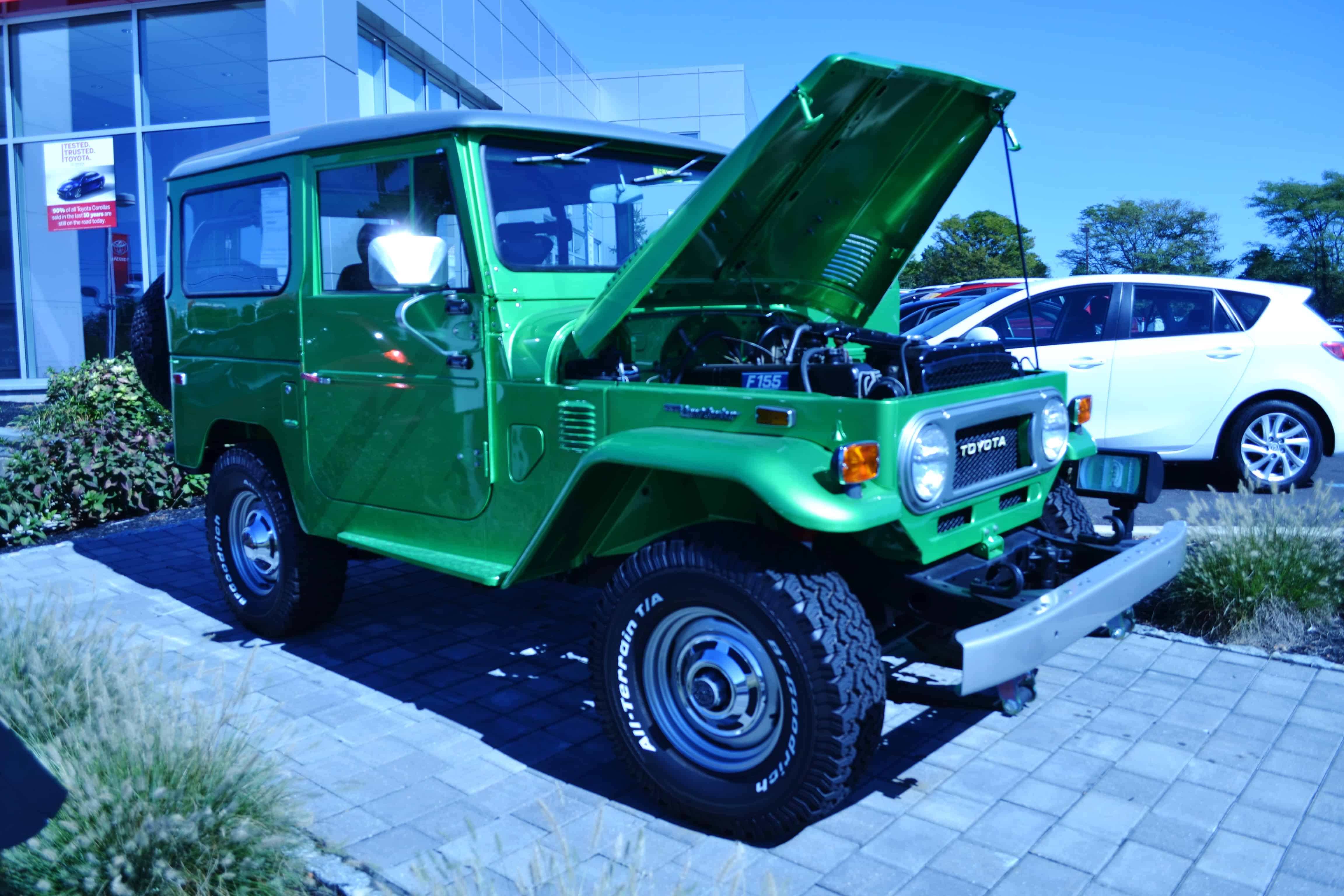
This 1973 Toyota Land Cruiser has been completely restored from the ground up, as reflected in the $40,000 asking price. Check out this link (http://www.peruzzi.com/used-Philadelphia-1973-TOYOTA-fi40-Base-FJ40140787) to learn more on Peruzzi’s website.
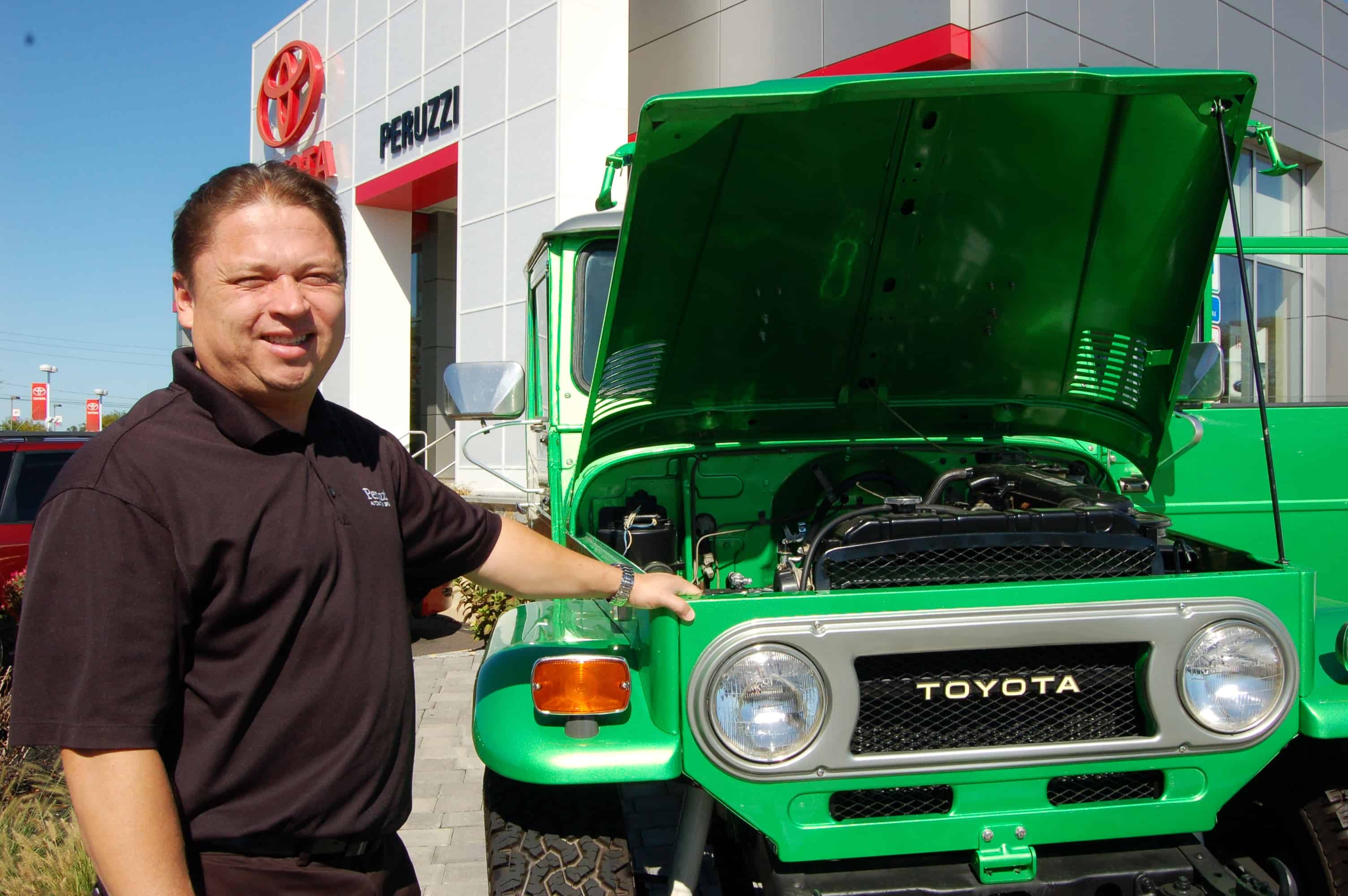
Sales Consultant John Rivera helped us open the hood, and pointed out a few of the details on this antique Land Cruiser. Engine compartment ventilation is incorportated directly into the hood, evidenced by the grilles on either side.
Being an A/C guy, one of the first things I did was stick my head through the open driver’s side window to look and see what type of climate control system (if any) this antique MPV (multipurpose passenger vehicle) may or may not have. I wasn’t really expecting to see an A/C system (which it doesn’t have), but I was happy to see the original Nippondenso air handling unit is still in place and in quite good shape. In fact, this is a great example of how early ventilation systems were designed, and of how heat was supplied to the passenger compartment. Our photos show this unit integrates a heater core (you can even see the heater hoses extending from the side of the case), which supply the hot engine coolant to keep the passengers warm.
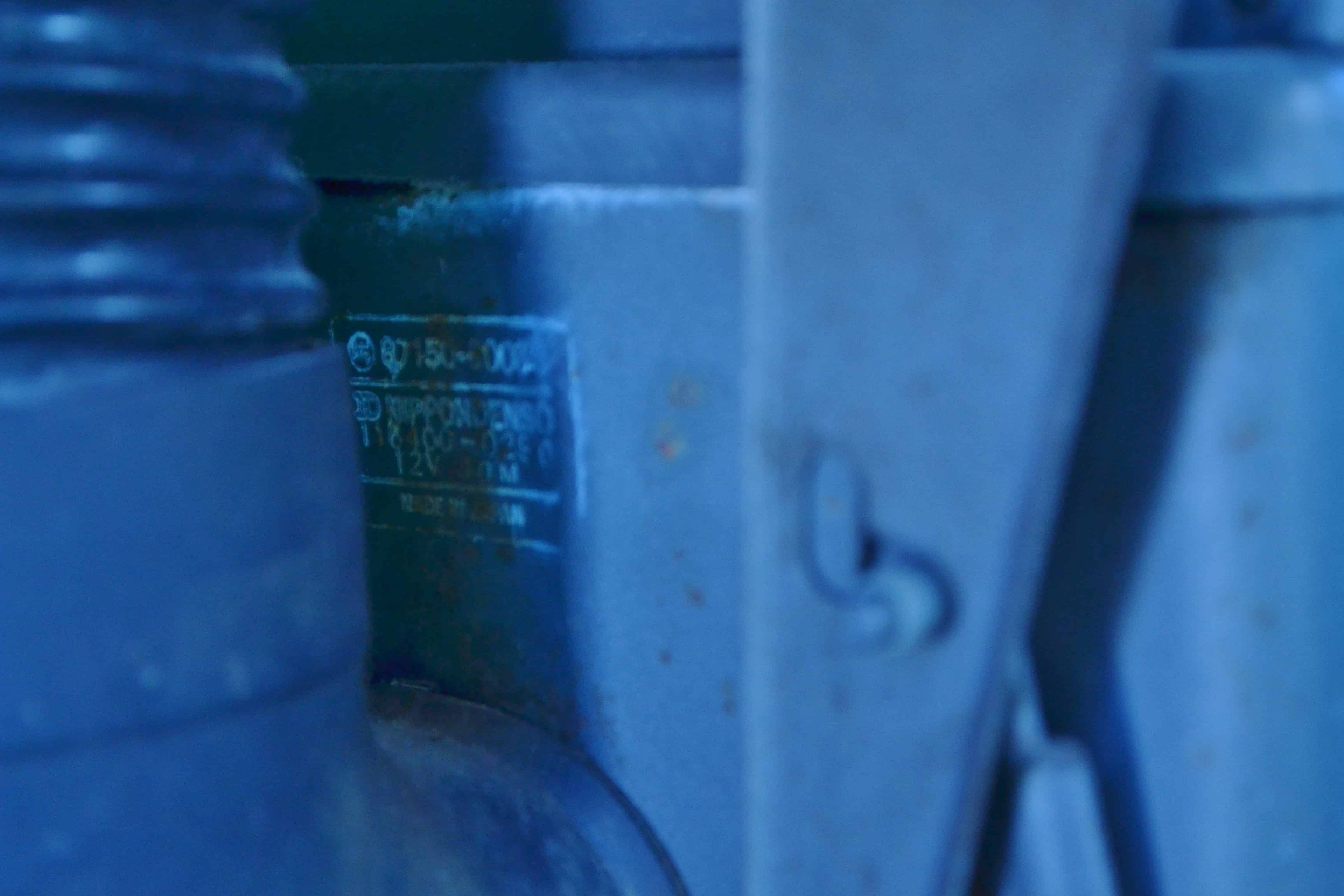
Many technicians are familiar with Nippondesnso’s “white ink stamp,” indicating the model number, manufacturer and operating voltage, along with that tagline which reads “Made in Japan.” We’re most familiar with seeing it on Toyota components from the 1980s and ’90s, and it’s interesting to find out that it was being used as far back as 1972.
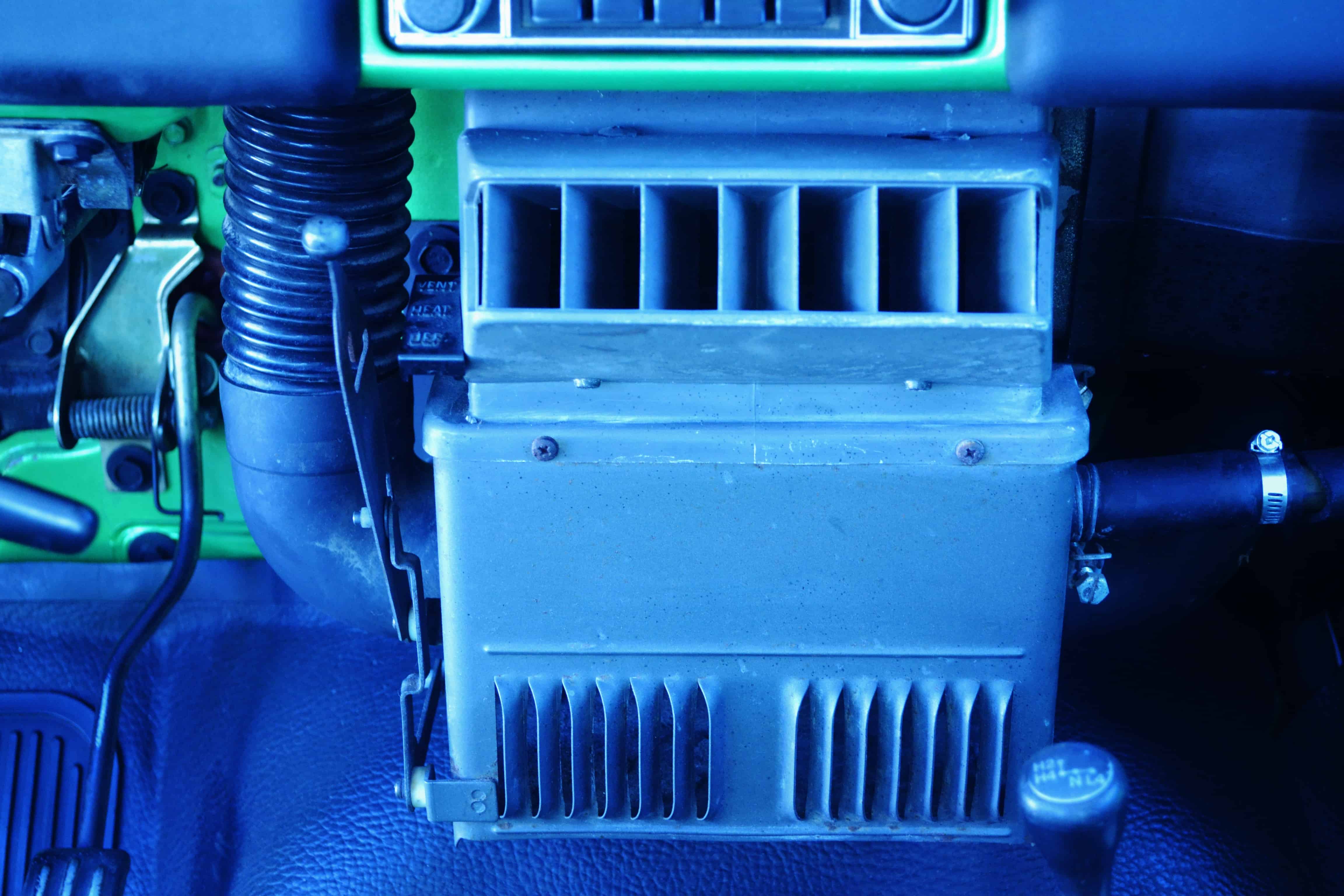
Cabin heating and ventilation was not an engineering priority back in the day, and while some did come with vents that operated off the ram air, many vehicles simply didn’t come with any type of system, let alone factory installed air conditioning. Consider too that a number of Land Cruisers may have been sold in warmer climates where a heating system just wasn’t necessary. It’s difficult to tell for sure, but this system was most likely a dealer installed add-on, supplied through the dealer’s Toyota parts department from Nippondenso.
Much of the air flow in cars and trucks from this time period came in the form of vent windows (aka “butterfly windows”) on the driver and passenger side doors. Opening these windows and angling them to the desired position would provide a slight or strong supply of outside air into the passenger compartment, and while not necessarily heated or cooled (other than from the change in air pressure), did provide air movement to clear the cabin of stale air.
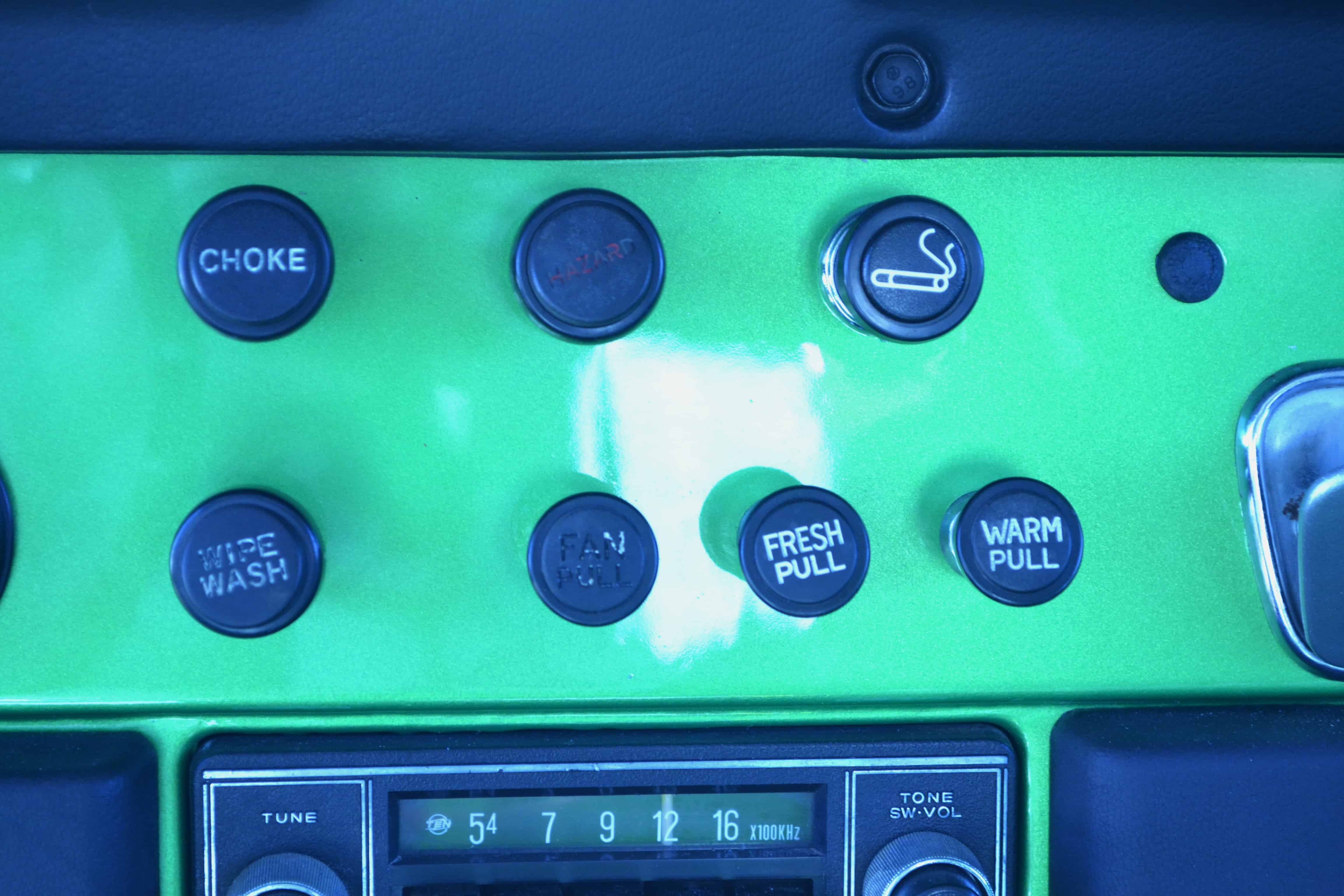
These three control knobs installed in the dashboard indicated fan, fresh and warm. Truly a classic!
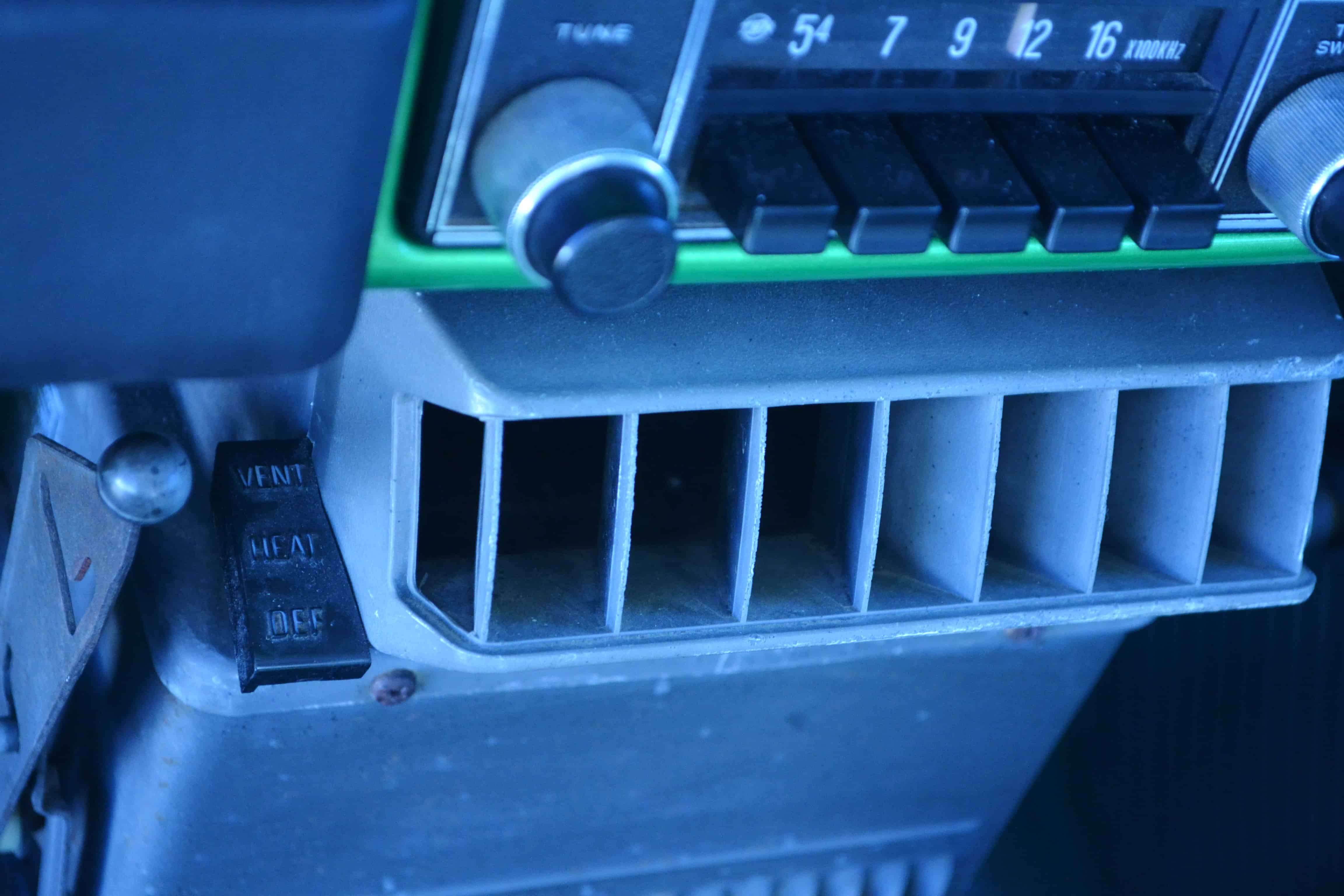
The mechanical slide control lever on the heater box has positions for vent, heat and defroster. It doesn’t get any simpler than this!

Toyota built the original Land Cruiser FJs between 1960 and 1984, although production did continue through 2001 for the Brazilian and South American markets. Later they redesigned it and brought it back as the FJ Cruiser from 2006 through 2014 here in the US, although overseas sales continue with right hand drive models.
More information about Peruzzi Toyota can be found on their www.peruzzi.com website. You can also find out more about the 2014 Toyota FJ Cruiser by visiting www.toyota.com/fjcruiser
DENSO is a leading supplier of advanced automotive technology, systems and components for major automakers. You can learn more at their corporate website www.globaldenso.com, or at www.densocorp-na.com for information about their North American operations.
A long time Member of MACS, DENSO Products and Services Americas (DPAM) is an automotive components sales and distribution company supplying parts for original equipment service dealers and for the independent aftermarket service centers and retailers. Visit their www.densoautoparts.com website where you can look up parts by vehicle year make and model or by individual part numbers, and get more information about DENSO auto parts, including their full line of A/C products. You can also download their latest catalogs and installation guides.

MACS is heading to Southern California for their upcoming 2017 MACS Training Event and Trade Show, being held February 15-18, 2017 at the Marriott hotel in Anaheim. Visit www.macsw.org to get the details, and don’t forget to stop by the Denso Auto Parts booth while you’re at the Trade Show on Friday, February 17th. We look forward to seeing you there!
If you’re a service professional and not a MACS member yet, you should be!
Become a member and receive a monthly technical newsletter with information like what you’ve just read in this blog post visit http://bit.ly/10zvMYg for more information.
You can E-mail us at macsworldwide@macsw.org .
To locate a Mobile Air Conditioning Society member repair shop in your area.
Click here to find out more about your car’s mobile A/C and engine cooling system.
Mobile A/C professionals should plan to attend MACS 2017 Training Event and Trade Show, February 15-18 at the Anaheim Marriott in Anaheim, CA.
Click here to see MACS current public training schedule.
The MACS website is located at www.macsw.org

Leave a Reply